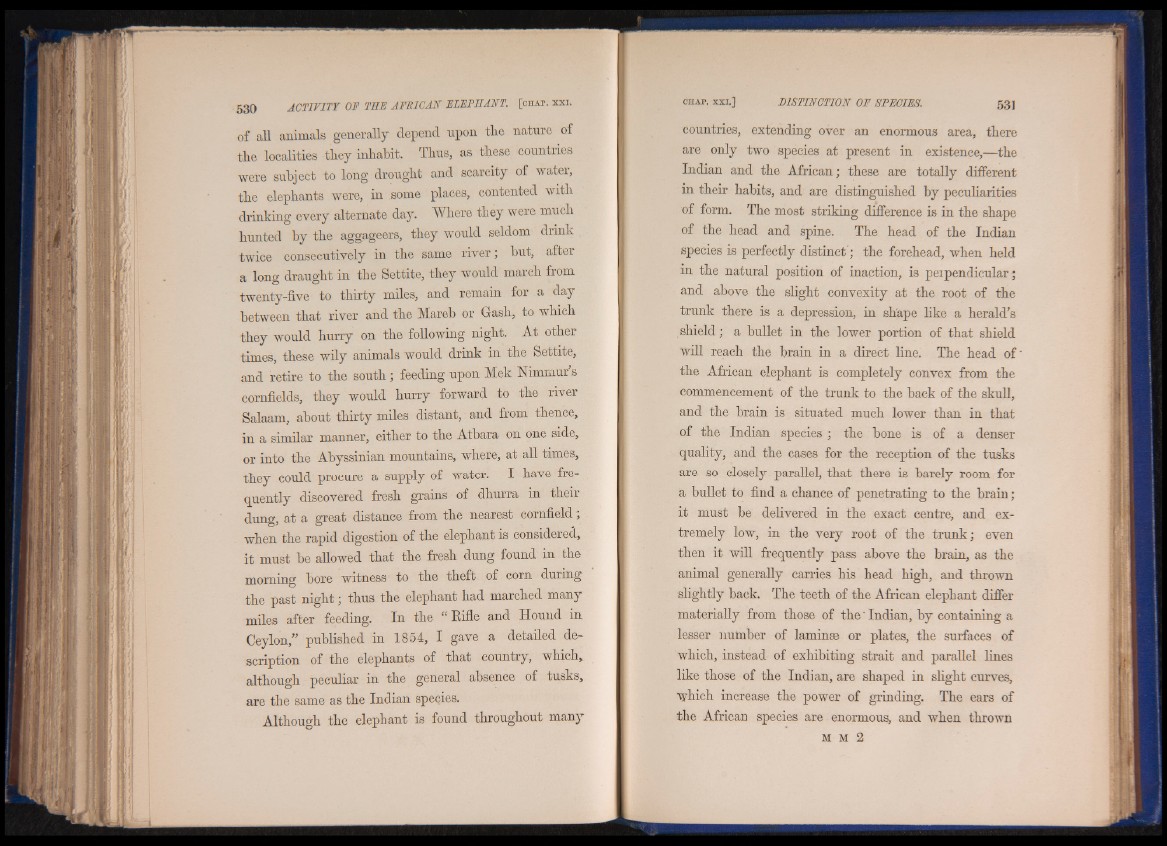
of all animals generally depend upon the nature of
the localities they inhabit. Thus, as these countries
were subject to long drought and scarcity of water,
the elephants were, in .some places, contented with
drinking every alternate day. Where they were much
hunted by the aggageers, they would seldom drink
twice consecutively in the same river; but, after
a long draught in the Settite, they would march from
twenty-five to thirty miles, and remain for a day
between that river and the Mareb or Gash, to which
they would hurry on the following night. At other
times, these wily animals would drink in the Settite,
and retire to the south ; feeding upon Mek Nimmur’s
cornfields, they would hurry forward to the river
Salaam, about thirty miles distant, and from thence,
in a similar manner, either to the Atbara on one side,
or into the Abyssinian mountains, where, at all times,
they could procure a supply of water. I have frequently
discovered fresh grains of dhurra in their
dung, at a great distance from the nearest cornfield ;
when the rapid digestion of the elephant is considered,
it must be allowed that the fresh dung found in the
morning bore witness to the theft of corn during
the past night; thus the elephant had marched many
miles after feeding. In the “ Rifle and Hound in
Ceylon,” published in 1854, I gave a detailed description
of the elephants of that country, which,
although peculiar in the general absence of tusks,
are the same as the Indian species.
Although the elephant is found throughout many
countries, extending over an enormous area, there
are only two species at present in existence,—the
Indian and the African; these are totally different
in their habits, and are distinguished by peculiarities
of form. The most striking difference is in the shape
of the head and spine. The head of the Indian
species is perfectly distinct; the forehead, when held
in the natural position of inaction, is perpendicular;
and above the slight convexity at the root of the
trunk there is a depression, in shape like a herald’s
shield; a bullet in the lower portion of that shield
will reach the brain in a direct line. The head of
the African elephant is completely convex from the
commencement of the trunk to the back of the skull,
and the brain is situated much lower than in that
of the Indian species ; the bone is of a denser
quality, and the cases for the reception of the tusks
are so closely parallel, that there is barely room for
a bullet to find a chance of penetrating to the brain;
it must be delivered in the exact centre, and extremely
low, in the very root of the trunk; even
then it will frequently pass above the brain, as the
animal generally carries his head high, and thrown
slightly back. The teeth of the African elephant differ
materially from those of the' Indian, by containing a
lesser number of laminae or plates, the surfaces of
which, instead of exhibiting strait and parallel lines
like those of the Indian, are shaped in slight curves,
which increase the power of grinding. The ears of
the Africau species are enormous, and when thrown